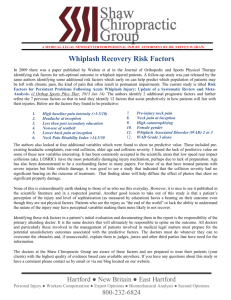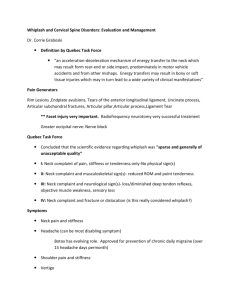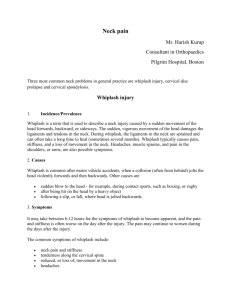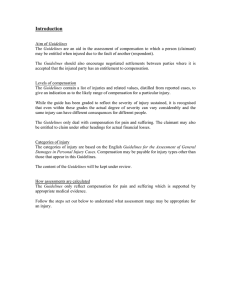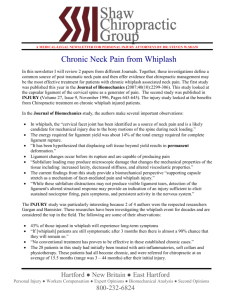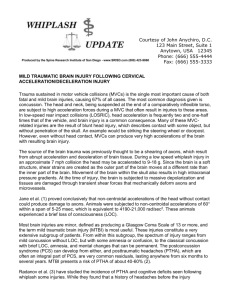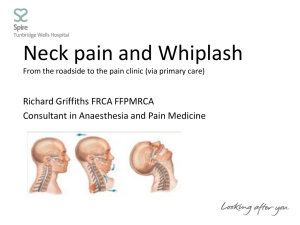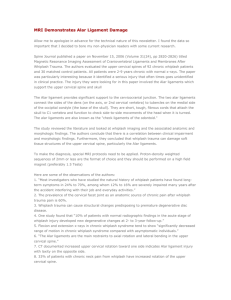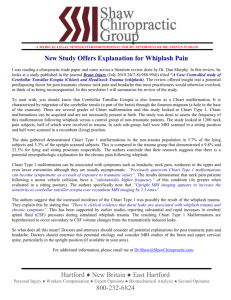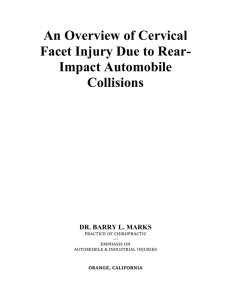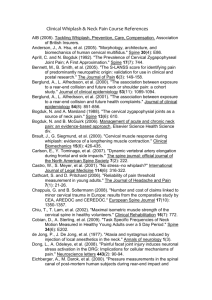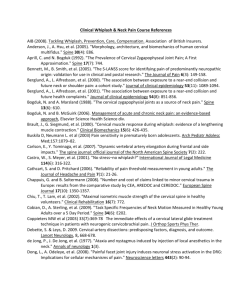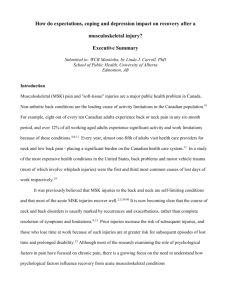Whiplash: Neck Trauma and Treatment
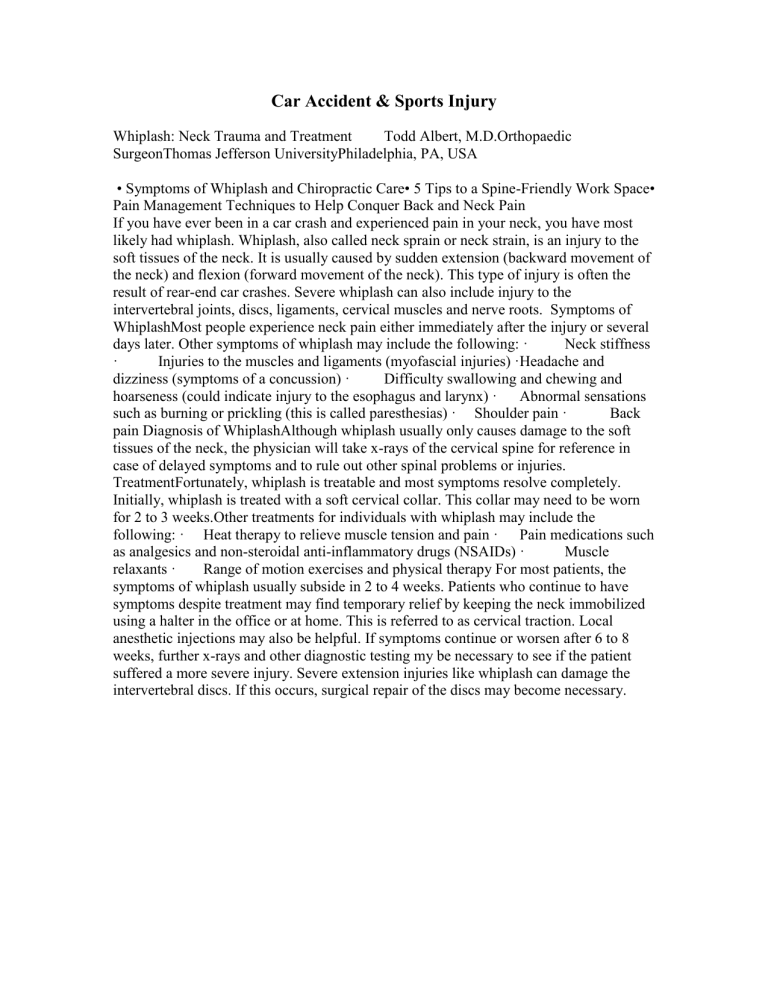
Car Accident & Sports Injury
Whiplash: Neck Trauma and Treatment Todd Albert, M.D.Orthopaedic
SurgeonThomas Jefferson UniversityPhiladelphia, PA, USA
• Symptoms of Whiplash and Chiropractic Care• 5 Tips to a Spine-Friendly Work Space•
Pain Management Techniques to Help Conquer Back and Neck Pain
If you have ever been in a car crash and experienced pain in your neck, you have most likely had whiplash. Whiplash, also called neck sprain or neck strain, is an injury to the soft tissues of the neck. It is usually caused by sudden extension (backward movement of the neck) and flexion (forward movement of the neck). This type of injury is often the result of rear-end car crashes. Severe whiplash can also include injury to the intervertebral joints, discs, ligaments, cervical muscles and nerve roots. Symptoms of
WhiplashMost people experience neck pain either immediately after the injury or several days later. Other symptoms of whiplash may include the following: ·
Neck stiffness
·
Injuries to the muscles and ligaments (myofascial injuries) ·Headache and dizziness (symptoms of a concussion) ·
Difficulty swallowing and chewing and hoarseness (could indicate injury to the esophagus and larynx) · Abnormal sensations such as burning or prickling (this is called paresthesias) ·
Shoulder pain ·
Back pain Diagnosis of WhiplashAlthough whiplash usually only causes damage to the soft tissues of the neck, the physician will take x-rays of the cervical spine for reference in case of delayed symptoms and to rule out other spinal problems or injuries.
TreatmentFortunately, whiplash is treatable and most symptoms resolve completely.
Initially, whiplash is treated with a soft cervical collar. This collar may need to be worn for 2 to 3 weeks.Other treatments for individuals with whiplash may include the following: · Heat therapy to relieve muscle tension and pain ·
Pain medications such as analgesics and non-steroidal anti-inflammatory drugs (NSAIDs) · Muscle relaxants · Range of motion exercises and physical therapy For most patients, the symptoms of whiplash usually subside in 2 to 4 weeks. Patients who continue to have symptoms despite treatment may find temporary relief by keeping the neck immobilized using a halter in the office or at home. This is referred to as cervical traction. Local anesthetic injections may also be helpful. If symptoms continue or worsen after 6 to 8 weeks, further x-rays and other diagnostic testing my be necessary to see if the patient suffered a more severe injury. Severe extension injuries like whiplash can damage the intervertebral discs. If this occurs, surgical repair of the discs may become necessary.
